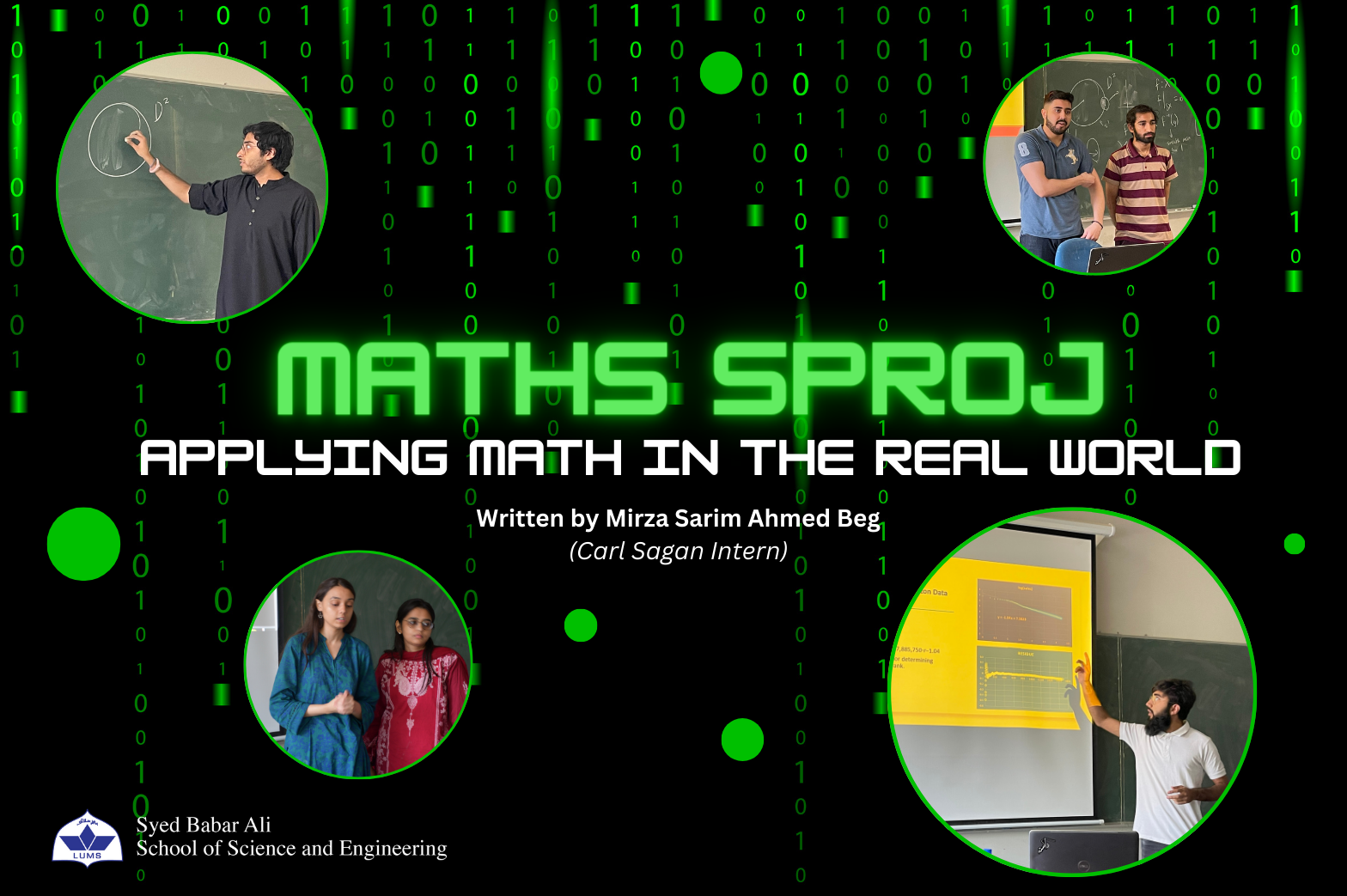
SProj Mathematics - Applying Math in the Real World
On the 13th and 15th of May 2024, mathematics senior year students geared up to present their projects as part of the Math Senior Project (Sproj) exhibition. Sproj is a degree requirement at SBASSE, where students apply everything, they have learned in their respective disciplines during their four years at LUMS and present a final research project. For mathematics this year, the topics for the projects were diverse, ranging from presentations of models of financial and sales data, to philosophical discussions regarding the historical interpretations of mathematics.
The first of these projects was “Value of Risk”, presented by Marium Shahid, Mahnoor Sheikh, and Raheema Naeem. Value of Risk (VaR) is a measure used in finance to quantify the potential risk (measured as potential loss in value) of a portfolio (collection of financial investments) over a specified time interval. This project investigated the accuracy of the Historic, Parametric and Monte Carlo methods of calculating VaR. Under the guidance of Dr. Adnan Khan, the students began working on the project in fall 2023, spending the first month determining the scope of their project, and then devoting the rest of their time researching and running simulations using Python and Excel.
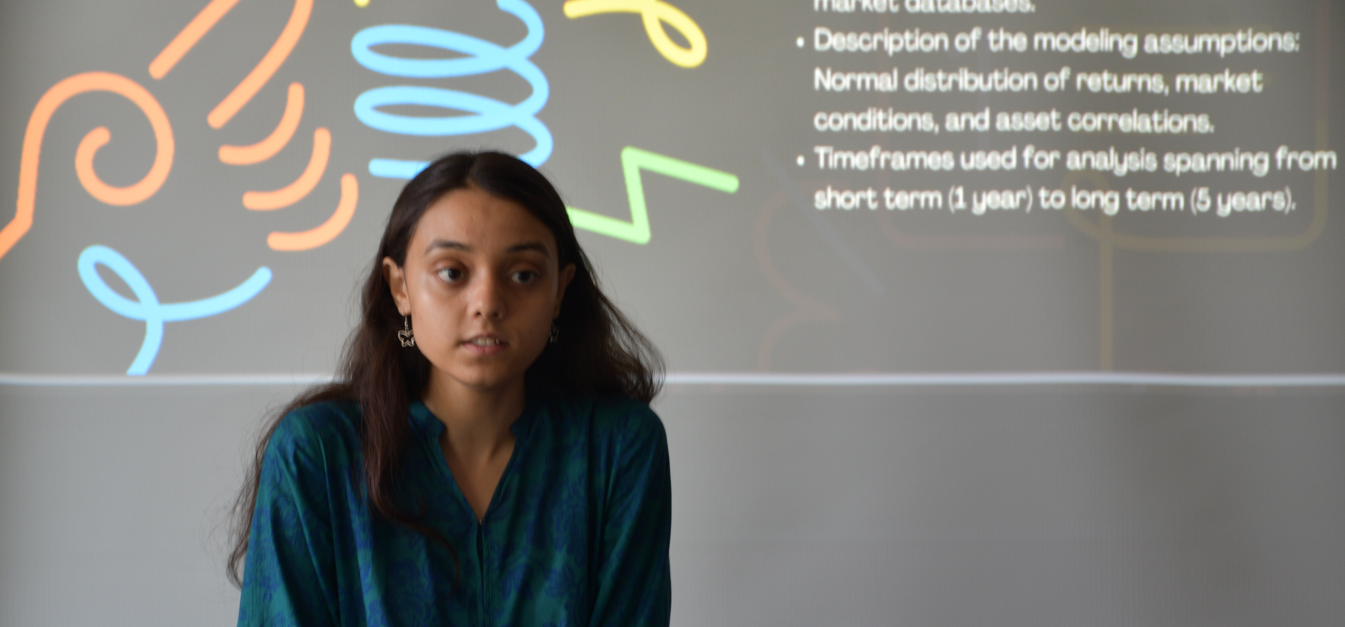
Another project presented was “Revolutions in Mathematics: A Case Study”, by Muhammad Tayyab and Ahmed Shaheer Rathore. This project took a philosophical approach to mathematics, exploring the history of the field and highlighting ‘eureka’ moments in mathematics, referring to how ‘scientific revolution’ was defined by Thomas Kuhn, and why studying such moments in retrospect is important to mathematics. They also discussed how Imre Lakatos used a historical approach to mathematics, and how it questions the idea of timeless mathematics. By building on the work of other mathematicians and philosophers such as Michael Crowe, Caroline Dunmore, and Viktor Blasjo, the team looked at cases such as that of Cartesian and Non-Euclidean Geometry. In developing the project, Muhammad Tayyab concentrated on the philosophical underpinnings of the study while Ahmed Rathore worked on the mathematics. They were both guided by Dr. Sultan Sial, who gave his students the freedom to go beyond the mathematics and pursue the philosophical aspects of the project.
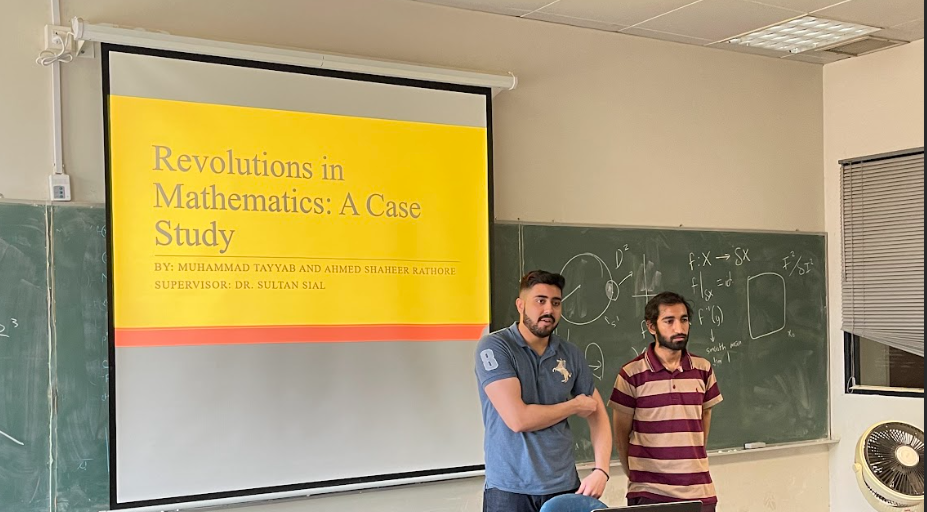
Another project included at the exhibition was Abdul Basit’s “An Empirical Analysis of Amazon Product Sales; A Comprehensive Study on the Applicability of Zipf’s”. Also being supervised by Dr. Sultan Sial, Abdul Basit analyzed the data from over a million Amazon products by applying Zipf’s Law. Specific categories were examined, including sports and baby products, and the analysis showed that the baby products category exhibited a greater deviation from Zipf’s Law than the sports product category. This implied that customers purchasing baby products converged on a few popular items while in the sports products category, customers might have more diverse preferences based on their interests.
Meanwhile, Arhum Naseem Khawaja’s “The Geometry and Topology of Brower's Fixed-Point Theorem”, under the guidance of Dr. Haniya Azam, explored Brower’s theorem and its application in Nash equilibrium and game theory; both of which are important concepts in economics.
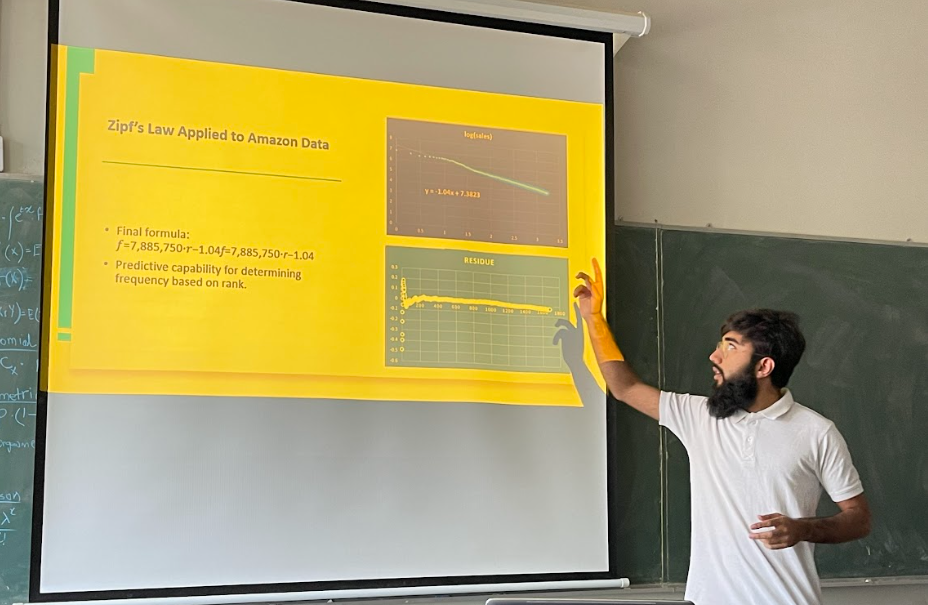
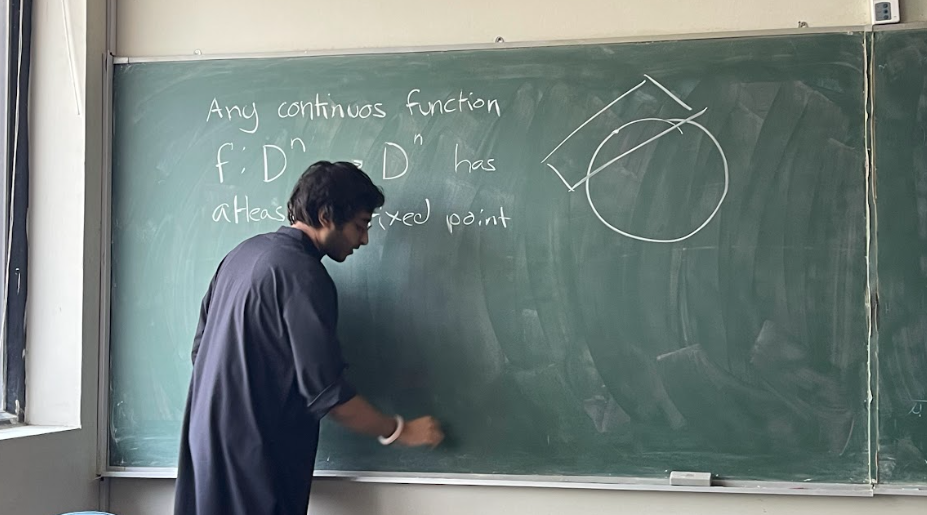
Many of these students decided the topic of their projects after being inspired by certain courses they took. The team behind the “Value of Risk" project took it on after all three completed a course in Quantitative Finance, Abdul Basit pursued his Amazon project after taking a course in Operations Research, while Arhum Naseem Khawaja explored algebraic topology as part of a directed research project following his completion of General Topology.
Why Maths: Senior Students’ Reflections
When these students were asked why they chose math as a major, everyone had different reasons. Some had excelled in the subject in school and in their first year at LUMS, while others originally intended to pursue different disciplines before engaging with mathematics.
Arhum Khawaja, for example, was originally an Economics major who did not enjoy math in school due to its computational nature and focus on solving past papers. However, as he took math courses at LUMS, he realized his interest in the theoretical aspect of the subject and transferred to the Department of Mathematics at SBASSE. Abdul Basit had a similar experience; he had originally declared Electrical Engineering as his major but switched to Mathematics because it was his true passion, and it gave him a sense of inner peace.
With their graduation imminent, each of these math majors have different plans moving forward. Some are focused on the industry pathway, such as Abdul Basit, who intends to work on a startup for the next year. Meanwhile, others have been accepted into graduate schools, including Marium Shahid, who will be attending the University of Kent for Actuarial Sciences, and Arhum Khawaja, who will be pursuing a master's in mathematics at the University of Illinois Urbana-Champaign. Regardless of the different career paths these students take, they are united by their commitment to mathematics and the determination to keep their passion alive.

